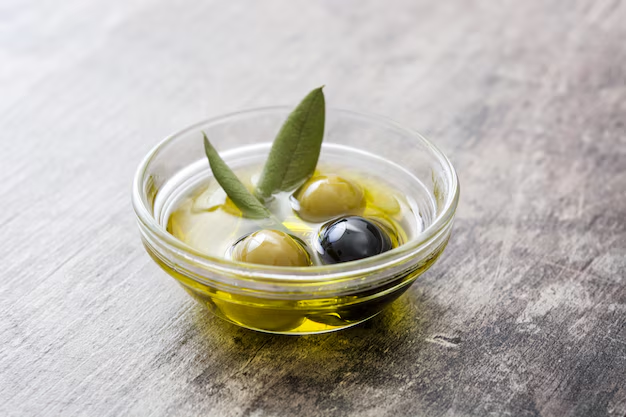Why Does Olive Oil Solidify in the Refrigerator and What Does It Mean for You?
Have you ever opened your refrigerator only to find that your beloved bottle of olive oil has turned cloudy and thick? Don't worry, you're not alone. Many are puzzled when this transformation occurs, wondering if their olive oil is spoiled or compromised in some way. Understanding why olive oil solidifies in the refrigerator can help put your mind at ease, and will also help you make better decisions in your kitchen. Let's dive into this fascinating topic and explore every aspect worth knowing about olive oil's behavior in colder environments. 🌿
The Science Behind Olive Oil Solidification
What Happens to Olive Oil in the Cold?
At temperatures below 50°F (about 10°C), olive oil begins to solidify. This transformation involves the crystallization of the natural waxes found in the oil. These waxes, while nearly invisible at room temperature, become prominent when chilled, causing the oil to turn cloudy and thicker.
The Chemistry at Play
Olive oil is rich in monounsaturated fats, primarily oleic acid. These fats are liquid at room temperature but begin to solidify when chilled. The rate and extent of solidification depend on the oil's composition, including the presence of other types of fatty acids and impurities.
Is Solidified Olive Oil Bad?
Absolutely not. The solidification process is entirely natural and reversible. Simply return the olive oil to room temperature, and it will regain its original clarity and fluidity. The change in appearance does not affect the oil's quality or flavor.
Types of Olive Oil and Their Refrigerator Behavior
Extra Virgin Olive Oil vs. Other Types
Extra virgin olive oil (EVOO) is the least processed form and contains more natural waxes and plant particles. Hence, it's more likely to solidify and turn cloudy in the fridge. Refined olive oils, on the other hand, are more processed and filtered, making them less prone to cloudiness.
How Purity Affects Solidification
Higher-quality olive oils, particularly those with fewer impurities, tend to solidify faster and more uniformly. This is often seen as a sign of good quality, as it indicates a high concentration of monounsaturated fats and minimal processing.
Storage Tips: Keep Your Olive Oil Fresh
Should You Store Olive Oil in the Refrigerator?
This depends on your usage and storage conditions. Generally, keeping olive oil in a cool, dark place such as a pantry or cupboard is sufficient to maintain its quality. Refrigeration might be useful if you seldom use olive oil and wish to extend its shelf life.
Best Practices for Olive Oil Storage
- Store in a dark, airtight container to minimize exposure to light and air.
- Keep away from heat sources like stoves or ovens.
- Use within a reasonable time frame, as oxidation can deteriorate its quality even in ideal conditions.
How to Revive Solidified Olive Oil
To return solidified olive oil to its liquid state, simply move it to a warmer location. It will liquefy naturally as it approaches room temperature. Stirring or briefly submerging the bottle in warm water can speed up this process.
Identifying Good-Quality Olive Oil
Signs of High-Quality Olive Oil
- Rich, pungent aroma and fruity or peppery taste.
- Golden-green color, often more apparent when first poured.
- Labels that specify cold-pressing and harvest date to ensure freshness.
Avoiding Common Olive Oil Pitfalls
- Be wary of overly cheap products that may be diluted or adulterated with other oils.
- Check for certifications and origin information to ensure authenticity.
Practical Uses and Benefits of Olive Oil
Cooking with Olive Oil
Olive oil is versatile and can be used in a variety of cooking methods, including sautéing, roasting, and even baking. It's known for its health benefits, being rich in antioxidants and healthy fats.
Using Olive Oil in Salads and Dressings
For the freshest taste, use extra virgin olive oil in salads and cold dishes, where its flavor profile can truly shine. It's perfect as a base for vinaigrettes or drizzled straight over greens.
Non-Culinary Uses of Olive Oil
Olive oil isn't just for cooking—it's also celebrated for its cosmetic and skincare applications. Use it for moisturizing skin, conditioning hair, or even polish natural wood surfaces.
FAQ: Common Questions About Olive Oil Solidification
Does Solidification Indicate a Problem?
No, it's a natural process that occurs when the oil is exposed to cold temperatures. It does not signify spoilage.
Can Solidification Affect Olive Oil's Shelf Life?
Not necessarily. While it might indicate a shift in storage conditions, the oil's actual shelf life remains unaffected as long as it's properly stored.
What to Do If You Prefer Liquid Oil Always?
If you prefer your olive oil not to solidify, keep it out of the refrigerator in a cool, dark place, and only refrigerate if absolutely necessary for long-term storage.
Key Takeaways: Keep These Handy Tips in Mind 🌟
- Solidification is natural: Your olive oil turning cloudy in the fridge is not a sign of spoilage.
- Storage tips: Keep in a cool, dark place; use an airtight container.
- Quality matters: Higher-quality oils tend to solidify faster and more completely.
- Versatile use: Great for cooking and non-culinary purposes like skincare.
Enjoy your olive oil with confidence, knowing these insightful tips and understanding exactly why it behaves the way it does in the refrigerator. Next time you notice that cloudy transformation, you'll know it's just your high-quality oil doing its natural thing. 🍾
